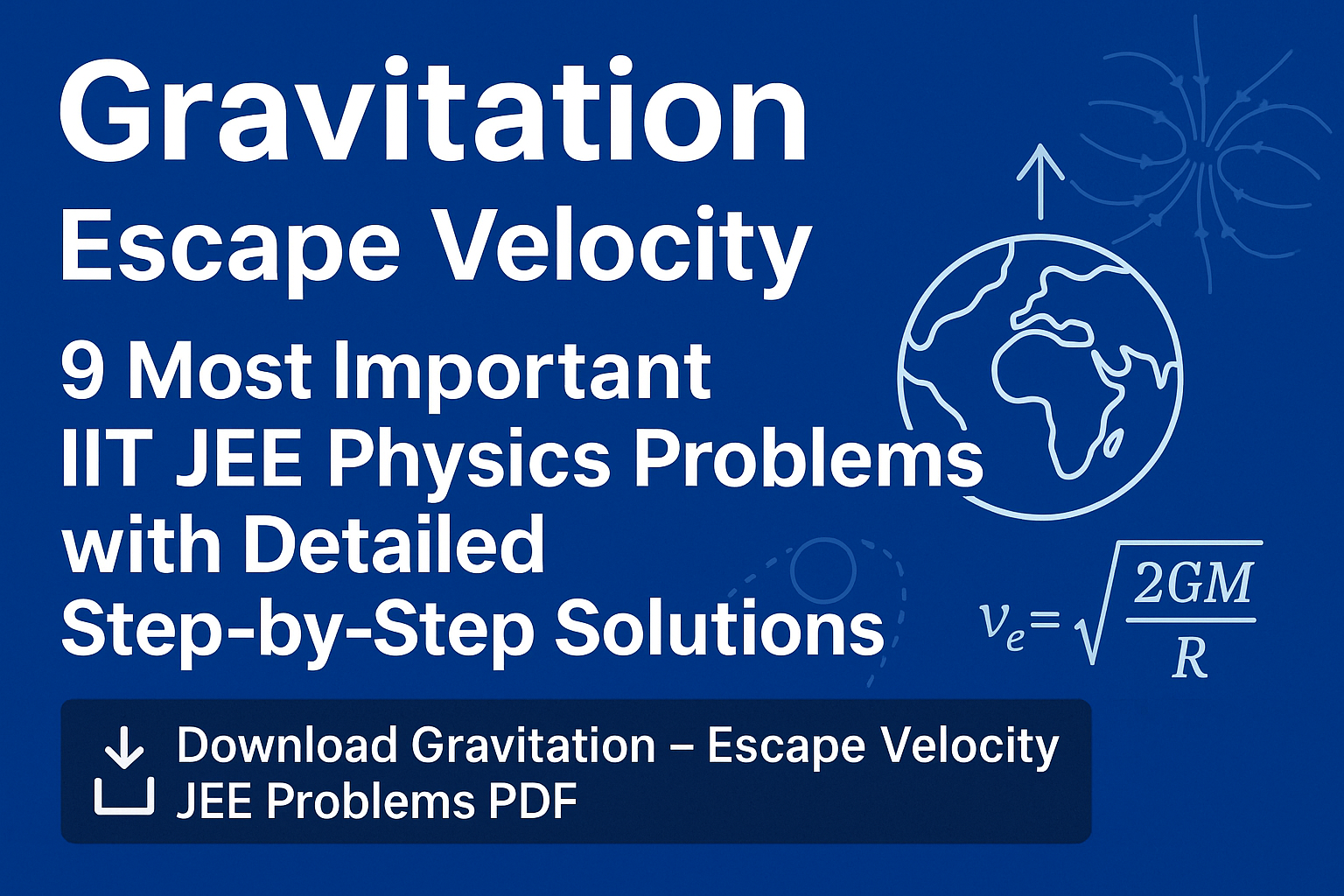This section includes many important IIT JEE Physics problems in Gravitation topics that are considered to be very important from IITJEE exam point of view. Here the solutions for these problems are very detailed with explanation for each step. This section is very helpful for students to get very high scores in IIT JEE.
IIT JEE Physics Problems in Escape Velocity topic in Gravitation concepts And Their Solutions with Detailed Step by Step Explanation.
Gravitation – Escape Velocity
🟩 Problem 1:
Earth has mass 8 times and radius 2 times that of a planet. If the escape velocity from the Earth is 11.2 km/s, then its value (in km/s) from the planet will be:
(1) 11.2 (2) 5.6 (3) 2.8 (4) 8.4
✅ Solution:
Step 1: Escape Velocity Formula
The escape velocity from a planet is given by:
$$ v_e = \sqrt{\frac{2GM}{R}} $$
- ve = escape velocity
- G = universal gravitational constant
- M = mass of the planet
- R = radius of the planet
Step 2: What’s Given?
- Earth’s escape velocity: \( v_E = 11.2 \text{ km/s} \)
- Earth’s mass: \( M_E = 8M_P \Rightarrow M_P = \frac{M_E}{8} \)
- Earth’s radius: \( R_E = 2R_P \Rightarrow R_P = \frac{R_E}{2} \)
- Mp = Mass of Planet
- Rp = Radius of Planet
Step 3: Escape Velocity of Earth and Planet
Escape velocity of Earth:
$$ v_E = \sqrt{\frac{2GM_E}{R_E}} $$
Escape velocity of Planet:
$$ v_P = \sqrt{\frac{2GM_P}{R_P}} = \sqrt{\frac{2G \cdot \frac{M_E}{8}}{\frac{R_E}{2}}} $$
Step 4: Simplify
$$ v_P = \sqrt{\frac{2G M_E}{8 \cdot \frac{R_E}{2}}} = \sqrt{\frac{2G M_E}{4 R_E}} = \sqrt{\frac{1}{4} \cdot \frac{2G M_E}{R_E}} = \frac{1}{2} \cdot v_E $$
Step 5: Final Calculation
$$ v_P = \frac{1}{2} \cdot 11.2 = \boxed{5.6 \text{ km/s}} $$
